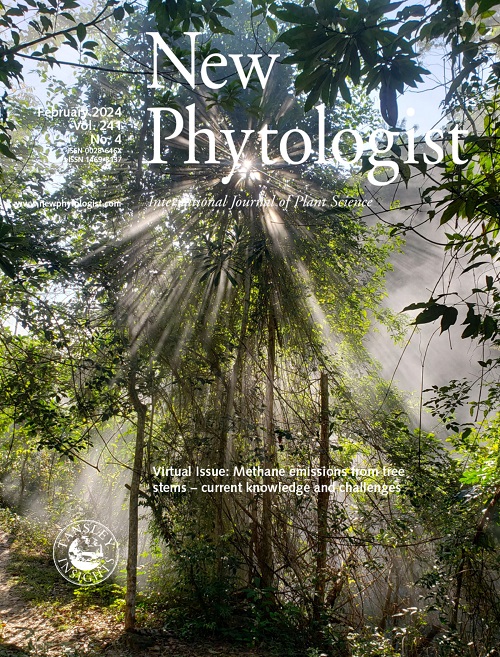GhRCD1通过调节GhMYC3-GhMYB44-GhLBD18转录级联调控棉花体细胞胚胎发生
IF 8.1
1区 生物学
Q1 Agricultural and Biological Sciences
引用次数: 1
摘要
植物体细胞胚胎发生(somatic embryogenesis, SE)是一个多因子的发育过程,可以发育成完整植物的胚胎是由体细胞而不是通过配子融合产生的。植物SE的分子调控涉及体细胞向胚性细胞的命运转变,这是一个有趣但仍然难以捉摸的问题。我们破译了GhRCD1与GhMYC3相互作用调控棉花SE期间细胞命运转变的分子机制。虽然沉默GhMYC3对SE没有明显的影响,但其过表达加速了愈伤组织的形成和增殖。我们确定了两个GhMYC3下游SE调节因子,GhMYB44和GhLBD18。GhMYB44过表达不利于愈伤组织生长,但促进了EC分化。而GhLBD18可以被GhMYC3触发,而被GhMYB44抑制,其正向调节愈伤组织生长。在调控级联的顶端,GhRCD1与GhMYC3拮抗相互作用,抑制GhMYC3对GhMYB44和GhLBD18的转录功能,从而crispr介导的rcd1突变加速细胞命运转变,类似于GhMYC3过表达的作用。此外,我们发现活性氧(ROS)参与了SE的调节。我们的研究结果阐明了SE的内稳态是由四分子模块GhRCD1-GhMYC3-GhMYB44-GhLBD18维持的,该模块以一种时间方式调节细胞内ROS。本文章由计算机程序翻译,如有差异,请以英文原文为准。
GhRCD1 regulates cotton somatic embryogenesis by modulating the GhMYC3–GhMYB44–GhLBD18 transcriptional cascade
- Plant somatic embryogenesis (SE) is a multifactorial developmental process where embryos that can develop into whole plants are produced from somatic cells rather than through the fusion of gametes. The molecular regulation of plant SE, which involves the fate transition of somatic cells into embryogenic cells, is intriguing yet remains elusive.
- We deciphered the molecular mechanisms by which GhRCD1 interacts with GhMYC3 to regulate cell fate transitions during SE in cotton. While silencing of GhMYC3 had no discernible effect on SE, its overexpression accelerated callus formation, and proliferation.
- We identified two of GhMYC3 downstream SE regulators, GhMYB44 and GhLBD18. GhMYB44 overexpression was unconducive to callus growth but bolstered EC differentiation. However, GhLBD18 can be triggered by GhMYC3 but inhibited by GhMYB44, which positively regulates callus growth. On top of the regulatory cascade, GhRCD1 antagonistically interacts with GhMYC3 to inhibit the transcriptional function of GhMYC3 on GhMYB44 and GhLBD18, whereby a CRISPR-mediated rcd1 mutation expedites cell fate transition, resembling the effects of GhMYC3 overexpression. Furthermore, we showed that reactive oxygen species (ROS) are involved in SE regulation.
- Our findings elucidated that SE homeostasis is maintained by the tetrapartite module, GhRCD1–GhMYC3–GhMYB44–GhLBD18, which acts to modulate intracellular ROS in a temporal manner.
求助全文
通过发布文献求助,成功后即可免费获取论文全文。
去求助
来源期刊

New Phytologist
PLANT SCIENCES-
CiteScore
17.60
自引率
5.30%
发文量
728
审稿时长
1 months
期刊介绍:
New Phytologist is a leading publication that showcases exceptional and groundbreaking research in plant science and its practical applications. With a focus on five distinct sections - Physiology & Development, Environment, Interaction, Evolution, and Transformative Plant Biotechnology - the journal covers a wide array of topics ranging from cellular processes to the impact of global environmental changes. We encourage the use of interdisciplinary approaches, and our content is structured to reflect this. Our journal acknowledges the diverse techniques employed in plant science, including molecular and cell biology, functional genomics, modeling, and system-based approaches, across various subfields.
 求助内容:
求助内容: 应助结果提醒方式:
应助结果提醒方式:


